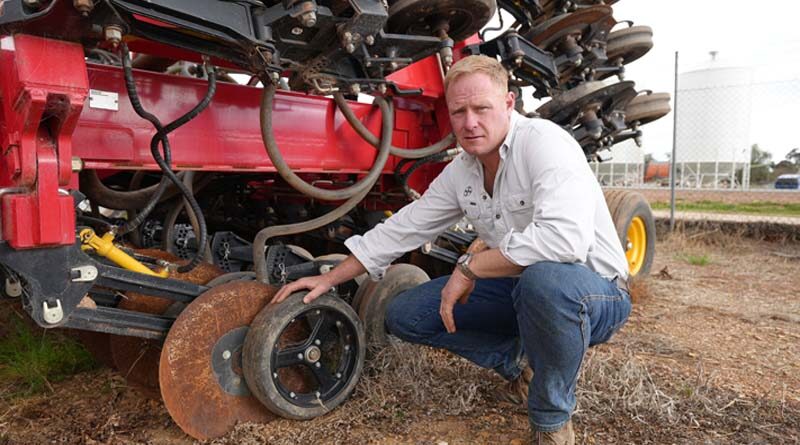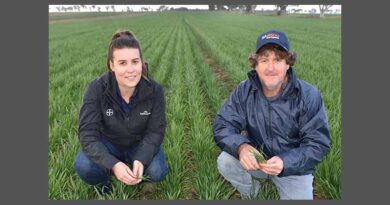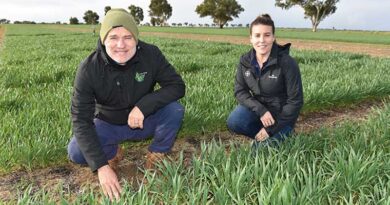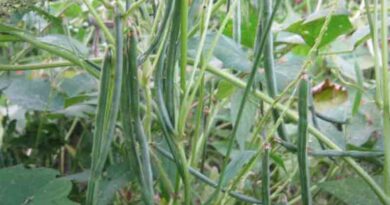New weed control benchmark confirmed for 2022 season
27 January 2022, AU: The promise of a new industry benchmark for grass and broadleaf weed control in wheat and barley crops has become reality for growers.
Bayer has welcomed the registration of its unique Mateno® Complete grass and broadleaf weed pre-emergent and early post-emergent herbicide by the Australian Pesticides and Veterinary Medicines Authority (APVMA) in time for the 2022 season.
Mateno Complete introduces a new herbicide mode of action for Australia, aclonifen (Group 32), in a complementary co-formulation with pyroxasulfone (Group 15) and diflufenican (Group 12) herbicides.
Aclonifen and diflufenican are taken up predominantly by plant shoots and leaves and so are particularly effective when supporting pyroxasulfone (predominantly taken up by plant roots) at the early post-emergent (EPE) timing.
Also Read: Certis biologicals names Dr. Holly davis field development manager in southern central USA
Dr Harry Strek, Senior Science Fellow and Scientific Director of Weed Resistance with Bayer, said the three active ingredients in Mateno Complete worked optimally together, delivering much higher activity than the individual components alone.
At the EPE timing, the new herbicide can be used in wheat to provide weed control across the complete soil surface, including in the furrow, on the furrow shoulder and in the inter-row, or it can be incorporated by sowing (IBS) in both wheat and barley to provide powerful and reliable control of grass weeds.
Mateno Complete, used IBS in wheat and barley, offers a high level of control of annual ryegrass, barley grass, annual phalaris, silver grass and toad rush and suppression of wild oats, great brome and capeweed. Used EPE in wheat, it provides control of small silver grass, toad rush, wild radish, capeweed and prickly lettuce and suppression of annual ryegrass, barley grass and doublegee/spiny emex.
Rick Horbury, Head of Market Development with Bayer, said the company prided itself on providing products to growers that delivered real value and which were well understood prior to their market release.
“The Australian development of Mateno Complete commenced back in 2014 and arrived at the co-formulation of three active ingredients we see today due to their performance under Australian conditions on our key weeds,’’ Rick said.
“It was a satisfying milestone in 2021 to see Mateno Complete perform just as well in the 100 grower-applied sites as it had in around 500 small plot trials conducted prior to its registration. This gives us great confidence that it will continue to perform for growers in the 2022 season and beyond.’’
Tim Wilkie, Broadacre Marketing Lead with Bayer, said the extensive crop trials, which had investigated a range of aspects from use with different machinery systems through to efficacy and crop safety, demonstrated Mateno Complete would effectively extend the window for early weed control.
“It provides improvements in weed control when compared with existing standards. The EPE applications following an effective pre-emergent herbicide showed particular strength and length of control compared with many alternate herbicides,’’ Tim said.
“Compatibility investigations also highlighted successful results in mixtures with a range of products. In trials where Mateno Complete was applied with bromoxynil-based herbicide, Buctril®, which is becoming available to growers again from March, it showed enhanced control of hard-to-kill broadleaf weeds.
“In addition to its flexible use pattern and weed control spectrum, importantly Mateno Complete also can be used with disc seeders in wheat, which are increasingly becoming adopted.’’
Image: Gus MacLennan, Market Development Agronomist with Bayer in New South Wales, takes a closer look at a disc seeding system, which importantly can be used for incorporation of the new Mateno Complete herbicide in wheat. Gus says the use of disc seeding systems is rapidly increasing and there has been a lack of registered herbicide options for growers to use with these seeders.
He said the new mode of action in Mateno Complete, via aclonifen, was a key benefit and would align with the industry’s strategy to use multiple herbicide modes of action to help growers delay the evolution of herbicide-resistant annual ryegrass.
Rotating and mixing multiple herbicide modes of action improves weed control efficacy, particularly of important problem weeds, and helps to increase the lifespan and number of effective applications of herbicides.
“With metabolic resistance in annual ryegrass a major concern for the industry, the EPE use pattern of Mateno Complete provides the dual benefits of increased weed control with the use of multiple herbicide modes of action within a season,’’ Tim said.
He said the excellent control of other grass weeds as well as broadleaf weeds from the EPE application also could help preserve important broadleaf herbicide tools for use in rotation or elsewhere within weed management programs.
Stocks of Mateno Complete will be available from Bayer agents from February. For further information, growers can contact their local Bayer representative.















